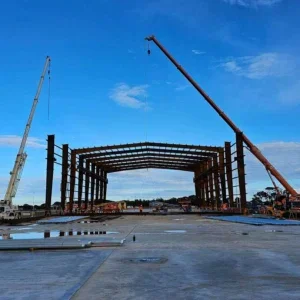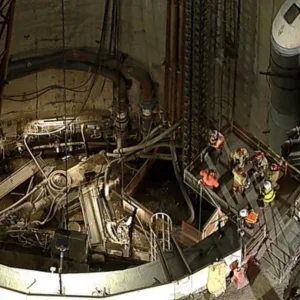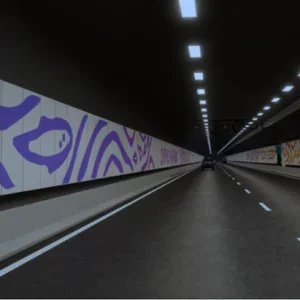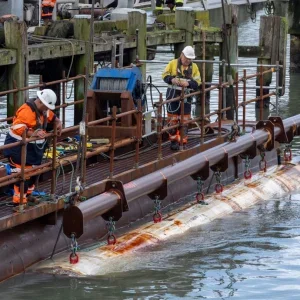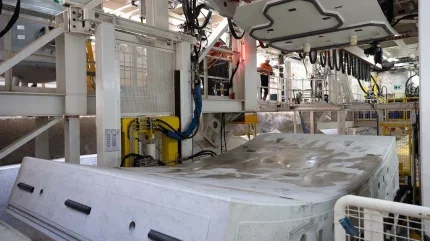
It is the first of two TBMs that Spark consortium will operate to build the twin tunnels.
Each TBM is 90m long, 15.6m in diameter high, and weighs 4,000 tonnes – among the biggest in the southern hemisphere.
The two Herrenknecht machines have been named Zelda and Gillian after two local women. Zelda D’Aprano AO (1928-2018) was a renowned activist who established the Women’s Action Committee and was a key player in a long campaign to close the gender pay gap.
Dr Gillian Opie is a neonatal paediatrician at the Mercy Hospital for Women in Heidelberg and founded Australia’s first breast milk bank more than 10 years ago.
Each TBM will advance approximately 10m per day, working up to 45m underground. They will install approximately 44,000 segments along the tunnel length.
More than 100 tunnel workers have undergone specialised training, with the Victorian Tunnelling Centre at Holmesglen providing state-of-the-art training.
The tunnels will be built using 100% renewable electricity supplied by Australia’s first First Nations owned energy retail company. Yurringa Energy will deliver 137.5 GWh of renewable electricity.
The spoil from the tunnelling operations will be reused across North East Link and other transport sites where possible, including the rehabilitation of a former quarry at Point Wilson and the former Orica site in Deer Park.
Tunnelling will continue into 2026 and the tunnels will open to traffic in 2028. The new route will take 15,000 trucks off local roads and cut journey times by 35 minutes.
Spark consortium, comprising Webuild, GS Engineering and Construction, CPB Contractors, China Construction Oceania, Ventia, Capella Capital, John Laing Investments, DIF and Pacific Partnerships, will build, operate and maintain the tunnels and key interchanges.



